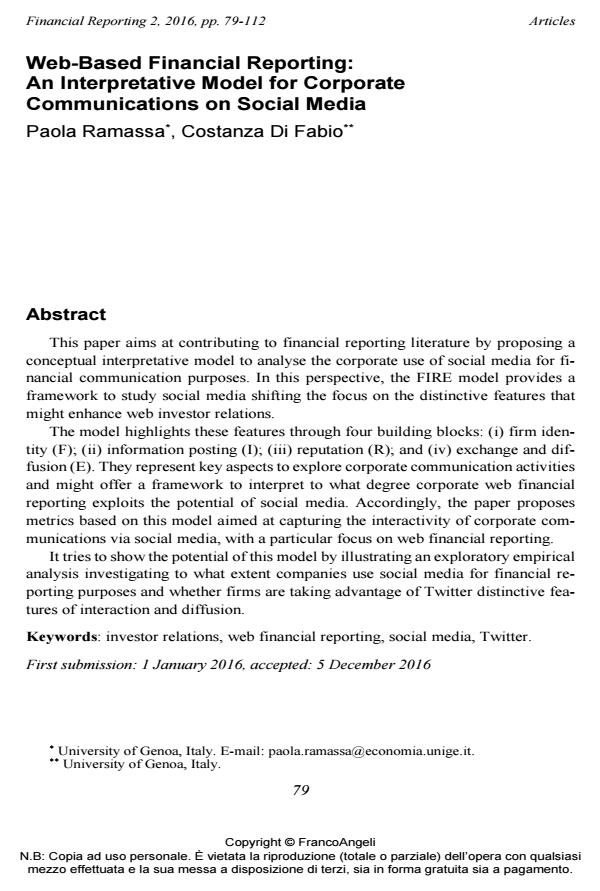Web-Based Financial Reporting: An Interpretative Model for Corporate Communications on Social Media
Titolo Rivista FINANCIAL REPORTING
Autori/Curatori Paola Ramassa, Costanza Di Fabio
Anno di pubblicazione 2017 Fascicolo 2016/2
Lingua Inglese Numero pagine 34 P. 79-112 Dimensione file 367 KB
DOI 10.3280/FR2016-002004
Il DOI è il codice a barre della proprietà intellettuale: per saperne di più
clicca qui
Qui sotto puoi vedere in anteprima la prima pagina di questo articolo.
Se questo articolo ti interessa, lo puoi acquistare (e scaricare in formato pdf) seguendo le facili indicazioni per acquistare il download credit. Acquista Download Credits per scaricare questo Articolo in formato PDF

FrancoAngeli è membro della Publishers International Linking Association, Inc (PILA)associazione indipendente e non profit per facilitare (attraverso i servizi tecnologici implementati da CrossRef.org) l’accesso degli studiosi ai contenuti digitali nelle pubblicazioni professionali e scientifiche
This paper aims at contributing to financial reporting literature by proposing a conceptual interpretative model to analyse the corporate use of social media for financial communication purposes. In this perspective, the FIRE model provides a framework to study social media shifting the focus on the distinctive features that might enhance web investor relations. The model highlights these features through four building blocks: (i) firm identity (F); (ii) information posting (I); (iii) reputation (R); and (iv) exchange and diffusion (E). They represent key aspects to explore corporate communication activities and might offer a framework to interpret to what degree corporate web financial reporting exploits the potential of social media. Accordingly, the paper proposes metrics based on this model aimed at capturing the interactivity of corporate communications via social media, with a particular focus on web financial reporting. It tries to show the potential of this model by illustrating an exploratory empirical analysis investigating to what extent companies use social media for financial reporting purposes and whether firms are taking advantage of Twitter distinctive features of interaction and diffusion.
Parole chiave:Investor relations, web financial reporting, social media, Twitter.
Paola Ramassa, Costanza Di Fabio, Web-Based Financial Reporting: An Interpretative Model for Corporate Communications on Social Media in "FINANCIAL REPORTING" 2/2016, pp 79-112, DOI: 10.3280/FR2016-002004